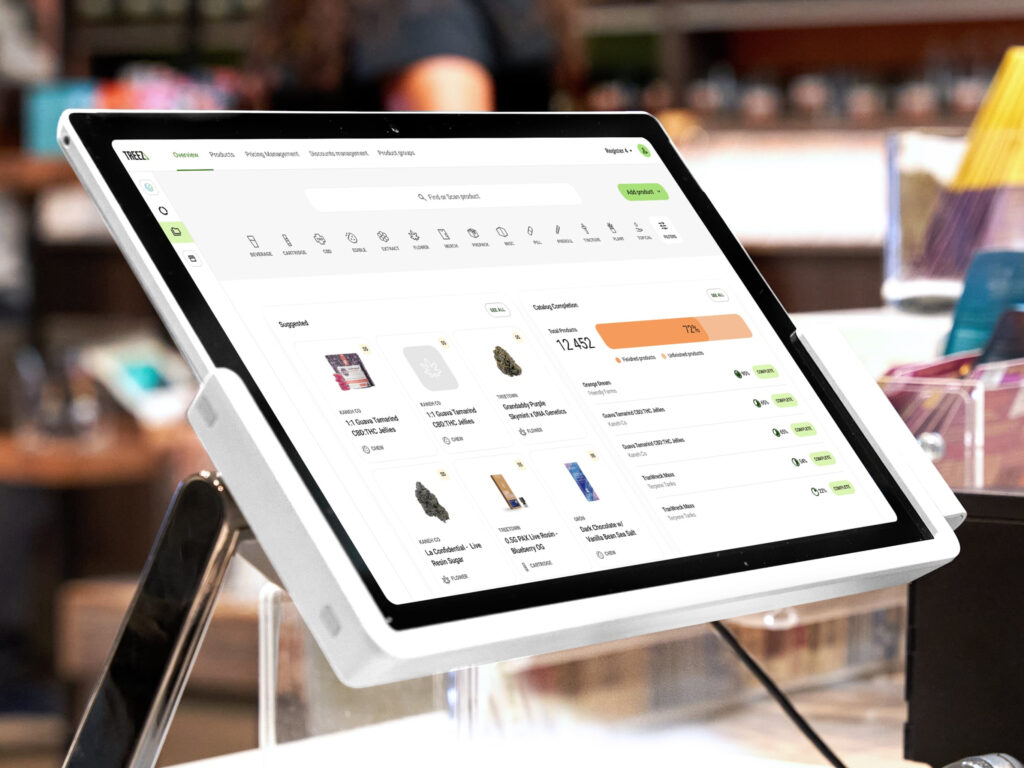Table of Contents
Table of Contents
See how Solink can help with your loss prevention needs right here.

What is loss prevention and why does it matter to you?
Loss prevention is a critical strategy for businesses aiming to protect assets and minimize financial losses due to theft, fraud, and other security breaches. This can involve a combination of things like policies, procedures, technologies, and training aimed at preventing both internal and external losses in general.
Also see our article on 64 tips to start implementing today regarding loss prevention here
Loss prevention is essential for maintaining profitability in any business. When assets are lost or stolen, it directly impacts the bottom line, putting businesses at a disadvantage in a highly competitive market. By implementing effective loss prevention strategies, businesses can safeguard their profits and invest more time in growth rather than resolving theft-related setbacks.
The proactive approach of loss prevention is critical for ensuring that resources are optimized and business operations run smoothly. Here are some eye-opening stats regarding loss prevention:
Retail losses and investment in loss prevention: In the U.S., retail losses alone were reported to be over $94.5 billion in 2021, a significant increase from $90.8 billion in 2020.
Global retail theft: The Global Retail Theft Barometer reports that retail shrinkage (which includes theft by customers, employees, and vendors, as well as administrative errors) amounts to nearly $100 billion annually worldwide.
So what are companies doing about it?
They are finding innovative loss prevention solutions. Many retailers are turning to advanced technologies to enhance their loss prevention efforts. For instance, artificial intelligence (AI) and machine learning are being integrated into video analytics systems to monitor in-store activities and detect suspicious behavior more effectively.
Many others are implementing strategies such as:
- Employee training and awareness: Educating employees about company policies, the importance of loss prevention, and how to recognize and report suspicious activities.
- Security measures: Implementing physical security measures such as security cameras, security tags, alarms, and access control systems to deter theft and vandalism.
- Inventory management: Keeping accurate inventory records, conducting regular audits, and using technology like barcodes or RFID tags to track inventory and identify discrepancies.
- Policies and procedures: Establishing clear policies regarding handling cash, processing returns, and managing inventory. Ensuring these procedures are followed consistently.
- Technology solutions: Using software and technology to monitor transactions, track inventory, and identify patterns that could indicate fraudulent activity.

Get your business AI‑ready today
Our free AI Readiness Guide walks you through what it takes to successfully adopt AI—from evaluating current systems to building a roadmap for implementation. Learn how to prepare your operations, people, and processes for AI-powered results.
The most common causes of loss at most businesses according to Solink
Here at Solink, we spoke to one of our resident experts on this topic, a Loss Prevention and Operations Analyst, he was able to break down some of the largest and most taxing difficulties in loss prevention today, the most common issues seen being:
- Employee-led discounts: Simply put, price reductions that employees give to customers, often without official permission. Typically, these discounts happen when an employee offers a special deal to a friend, family member, or even themselves, which goes beyond the store’s standard discount policies.
- Giving out free product or “sweethearting”: This practice is where employees give unauthorized free products or services to customers, typically friends or family. This act bypasses the usual sales process, resulting in no revenue for the items or services given away. While it may seem like a small gesture, sweethearting can accumulate significant losses for businesses over time.
- Employee Theft: These situations are where workers steal from their place of employment. This can include taking money, merchandise, or company property, or misusing company resources in a way that benefits the employee at the business’s expense. Employee theft is a major concern for businesses as it can lead to substantial financial losses and undermine the trust within the organization.
You can see there is more of a focus on transactional and point-of-sale loss versus the more standard operational loss. According to our LP Analyst, “these are the top 3, in the order we usually see them. Unfortunately it is always possible to create loss at these types of transactional intersections.”
What was outside the “top three”? It was mentioned that subjects of void misuse, customer theft, operational errors, damages and vendor fraud, were all higher end problems as well.
Addressing these three issues is not the ultimate solution to loss prevention, but it significantly contributes to resolving a large portion of the challenges faced in the general transactional aspects of business.
Expert strategy and tips for loss prevention from our pros
Many businesses may not realize how important and effective newer loss prevention tactics can be, especially against larger issues discussed here. Instead of spending hours trying to prevent loss, using modern technology and refined strategies can reduce this effort to just minutes if you have the right systems in place.
“Understanding all of your sore points and where you are losing money is key”, members of the Solink LP Analyst team said. “What do your discounts look like? What is going through your point of sale system? How are you monitoring your product, employees and interactions inside of your working locations and using the data from them to find anything worth looking into.”
It comes down to what you have at your fingertips in order to mitigate factors of major loss occurring in your environment:
Focus 1: Point-of-sale reclassification, using it correctly
“Using your point-of-sale as a vehicle to create an efficient business is key to having your eye on everything and your ear to the ground”, says our member of the team. Reclassifying your system means using it in a way that benefits you most, by having software enhancing your ability to see every time a transaction is processed or money is changing hands. Solink does this for you by linking transactions with video. From inventory accuracy to what discounts are being used most, the point-of-sale is a hub for all business when it comes to data.
“For example, any time we work with quick service restaurants (QSRs) who have multiple sites, the fact that Solink can give them real-time alerts within a POS system that has been configured to look for these sorts of things, there’s nothing better than that to them.”
Making sure your data is integrated with your video is everything when it comes to addressing discount abuse, sweethearting, employee theft, void misuse and so on. Tracking data within the system through software is the way to get your losses to stop.
Audits of your system are also very important and are something that we offer. How you are looking at your data and what you are paying attention to within your POS is important. Here at Solink we offer audits giving you access to an analyst to help overlook your current situations. It’s a great lens into knowing what you can do with the data that is in existence already but currently not being organized.
Focus 2: Superior security camera placement
“The security cameras are the confirmation for your data. The video footage provided by your cameras matched with the data from the POS tell the whole story. Your camera placement is essential to your ability to piece together events that have occurred and losses that may be taking place in your environment. Having security cameras is great, but it’s even better to know why they’re placed in specific spots. This helps you make the most of the features in your security software. Uses such as motion search, heat mapping, exit and entrance alerts and detection, just to name a few. With physical theft, employee negligence and accidental damages all falling under the loss prevention category, correct camera placement is important when it comes to a better loss prevention system.
Our team member states, ”Having cameras over the POS system areas, not having blindspots, having cameras near the safes if you have safes, entrances, exits, covering yourself on all these basic levels – this is how to build the foundation from a loss prevention standpoint.”
Focus 3: Being able to pair and confirm your data (POS + video)
From a loss prevention standpoint, there is POS, as mentioned, and there are cameras. These are not new, what is new is the ability to pair the two in order to confirm your data. “Operational loss prevention is of course very important, things like employees leaving early or inventory management, but the ability to have an eye on multiple shops, more employees, more things going on is the kicker that saves loss.” This is again, according to Solink’s LP Analyst team.
This integration of data and video offers a robust method to monitor and verify every aspect of your business activity.
Focus 4: Basic training recommendations
“Having your staff know what you have in place from a security standpoint is extremely important to deterring theft. If staff are aware that a Solink system exists, plus knowing that all cameras are in working order and placed to help the business is so important.”
Effective staff training on your security systems is crucial for maximizing their preventive capabilities. Educating employees about the functionalities of tools like Solink and the strategic placement of cameras can serve as a powerful deterrent against internal theft. Having documented policies and procedures in place is also beneficial.
Focus 5: Integrated remote monitoring
Integrated remote monitoring plays a pivotal role in modern loss prevention strategies by leveraging the power of remote technology to enhance the oversight and responsiveness of business operations. This approach enables managers and business owners to access real-time data from their security systems, POS terminals, and other operational tools directly from their smartphones, laptops or tablets, regardless of their physical location.
With integrated remote monitoring, leaders can receive instant alerts and notifications about suspicious activities, transaction anomalies, or any operational discrepancies. This immediate access allows for swift action, which is crucial in preventing potential losses or resolving issues before they escalate.
A real world example: Putting these focuses into practice
Imagine a typical quick service restaurant (QSR) chain that implements a sophisticated loss prevention strategy using advanced technologies. By focusing on the top three common causes of loss—discount abuse, sweethearting, and employee theft—the restaurant chain can significantly enhance its operational efficiency and security.
- Point-of-Sale reclassification: First, the restaurant reconfigures its POS systems to closely monitor transactions. This setup is designed to flag unusual activity such as unauthorized discounts or patterns that might suggest sweethearting; for instance, if a particular employee consistently processes an abnormally high number of discounts.
- Advanced security camera placement: Next, the restaurant strategically places cameras that cover all critical areas, including cash registers, storage rooms, and dining areas. These cameras are integrated with the POS system, allowing for video verification of transactions flagged as suspicious.
- Data and video pairing: By pairing data from the POS with real-time video security, the restaurant gains a comprehensive overview of its operations.
- Staff training and awareness: By educating employees about the advanced monitoring systems in place, such as real-time data and video oversight, the restaurant fosters an environment of accountability and transparency.
- Integrated remote access: Lastly, the restaurant’s management team uses a mobile monitoring app that provides real-time alerts and access to security footage and transaction data directly from their mobile devices.

Conclusion and next steps
Loss prevention is not just about reacting to incidents but proactively managing potential risks to minimize them significantly. This means integrating new solutions that not only track and report, but also predict and prevent. As you consider the layers of security and operational efficiencies discussed, ask yourself: What am I doing now with my security system? Is my approach to loss prevention as comprehensive as it could be? Am I fully protected, or are there gaps that I need to address?
In competitive markets where every penny counts, ensuring that you are fully utilizing the potential of your security and loss prevention systems is not just a necessity—it’s a strategic advantage. Take a moment to evaluate your current strategies and consider whether you are indeed taking those easy wins that could make a substantial difference in safeguarding your assets and boosting your bottom line.